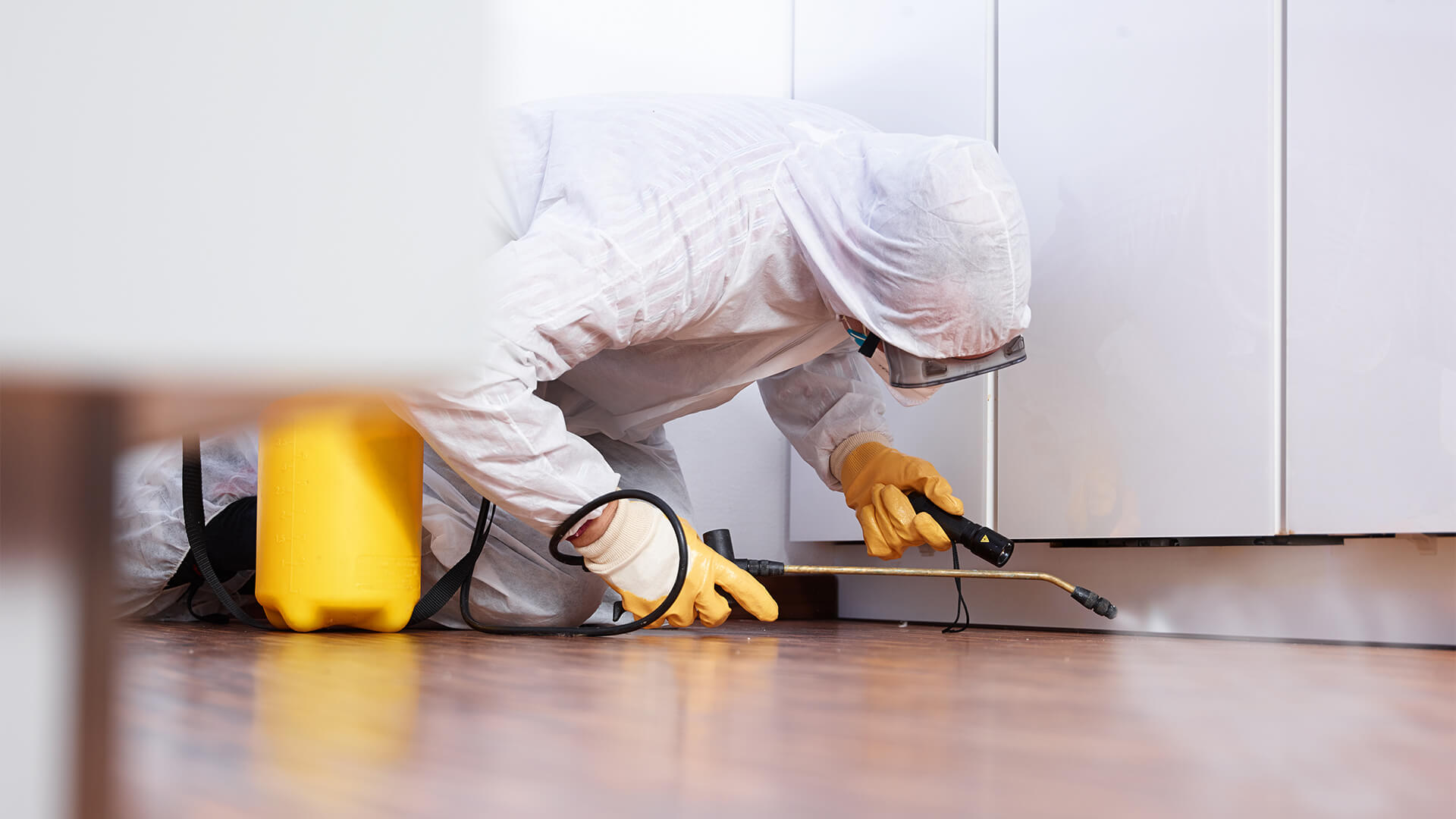Comprehensive A1 Pest Control in Portland Oregon Bed Bugs - Safe Treatments
Comprehensive A1 Pest Control in Portland Oregon Bed Bugs - Safe Treatments
Blog Article
Efficient Insect Control Solutions: A Thorough Consider Elimination Techniques and Prevention Procedures
In the world of parasite control solutions, the effective monitoring of infestations needs a meticulous approach that incorporates various strategies and procedures for both eradication and avoidance. From Integrated Insect Monitoring (IPM) methods that prioritize lasting solutions to chemical elimination techniques designed for targeted elimination, the collection against pests is huge and multifaceted. Organic control methods and physical prevention measures provide different paths to effectively combating undesirable intruders. Nevertheless, the key to a comprehensive bug control plan exists not just in the strategies themselves, however also in the meticulous professional evaluation treatments that precede and notify them. By recognizing the ins and outs of each approach and how they interaction, one can truly grasp the intricacy and effectiveness of contemporary parasite control services.

Integrated Parasite Administration (IPM) Strategies
Integrated Pest Management (IPM) Strategies incorporate a comprehensive approach to pest control that focuses on control, prevention, and tracking approaches to efficiently manage bug populaces. By incorporating different techniques, IPM aims to minimize the effect of parasites while additionally minimizing the reliance on chemical pesticides. Avoidance lies at the core of IPM, emphasizing techniques like appropriate hygiene, upkeep of hygiene, and securing entrance factors to prevent pests from infesting structures.
Chemical Elimination Strategies
Chemical extermination methods are commonly used in insect control solutions to successfully eliminate parasite populations that posture a risk to human wellness and residential property. These techniques include the use of different chemical substances especially developed to target and eliminate parasites such as bugs, rodents, and various other unwanted animals. The application of chemicals, insecticides, rodenticides, and various other chemical representatives is very carefully regulated to make certain optimum effectiveness while decreasing dangers to human beings, animals, and the setting.
One of the vital advantages of chemical extermination methods is their ability to provide quick and targeted outcomes, making them particularly helpful in cases of serious infestations or immediate insect control requirements - a1 residential pest control portland or bed bugs. Nevertheless, it is necessary to highlight the relevance of proper handling, application, and disposal of these chemical items to avoid unintentional injury
In addition, integrated pest management (IPM) techniques typically combine chemical extermination methods with other techniques such as cleanliness, habitat modification, and biological controls to create a extensive and sustainable parasite control approach. By integrating chemical extermination techniques judiciously within an IPM framework, parasite control solutions can successfully handle insect populations while minimizing potential threats to human wellness and the atmosphere.
Biological Parasite Control Approaches
Utilizing natural killers and bloodsuckers to handle insect populations is a lasting technique understood as biological pest control. This strategy takes advantage of the natural mechanisms of the ecological community to control pest populaces without counting on artificial chemicals. One typical biological control approach includes introducing all-natural opponents of the target pest varieties, such as ladybugs for aphid control or nematodes for termite invasions. These natural killers prey on the insects, helping to maintain their populations in check.
An additional efficient organic control strategy is the use of microbial pesticides. These are naturally happening microbes, such as fungi, viruses, and germs, that especially target and contaminate specific pest types. By using these microbial representatives, parasite populations can be successfully lowered without causing or harming beneficial microorganisms injury to the setting.
Physical Parasite Avoidance Measures
Carrying out physical pest prevention procedures includes making use of barriers and architectural adjustments to deter parasites from infesting a property or going into. Installing door moves, displays on windows, and sealing fractures in the structure can help protect against pests like bugs and rodents from getting gain access to indoors.
Another physical prevention measure is the use of barriers like secure fencing to maintain bigger bugs such as deer or raccoons away from the property. By implementing these physical pest prevention measures, property proprietors can substantially minimize the danger of bug invasions and the damage they can cause.
Professional Parasite Assessment Procedures
Performing detailed and methodical bug examinations is an essential element of professional parasite administration protocols. Specialist insect assessors are trained to diligently analyze residential properties for signs of problems, identifying read pest varieties, entry points, and conducive problems. The inspection procedure typically starts with a comprehensive evaluation of both the interior and outside of the facilities. This entails checking for insect droppings, munch marks, nests, and any architectural damages that might show insect task. In addition, inspectors may utilize customized tools such as wetness meters and borescopes to identify covert invasions within wall surfaces or crawl rooms.

Verdict
Finally, effective insect control solutions use a variety of methods, consisting of Integrated Parasite Management techniques, chemical elimination methods, biological controls, and physical avoidance actions. Professional insect assessment treatments play a critical role in determining and resolving pest issues in a timely manner. By executing a combination of these techniques, property proprietors can efficiently avoid and manage insect infestations.
From Integrated Insect Monitoring (IPM) techniques that focus on sustainable remedies to chemical elimination strategies made for targeted removal, the collection versus bugs is multifaceted and large.Integrated Pest Management (IPM) Approaches incorporate a thorough technique to pest control that concentrates on control, avoidance, and tracking approaches to properly handle bug populaces.Chemical extermination strategies are frequently utilized in parasite control solutions to efficiently eradicate bug populations that pose a hazard to human health and wellness and residential property.Utilizing all-natural killers and parasites to take care of insect populaces is a sustainable method recognized as biological parasite control.In final thought, effective pest control services employ a selection Continued of methods, including Integrated Bug Management methods, chemical extermination approaches, biological controls, and physical avoidance measures.
Report this page